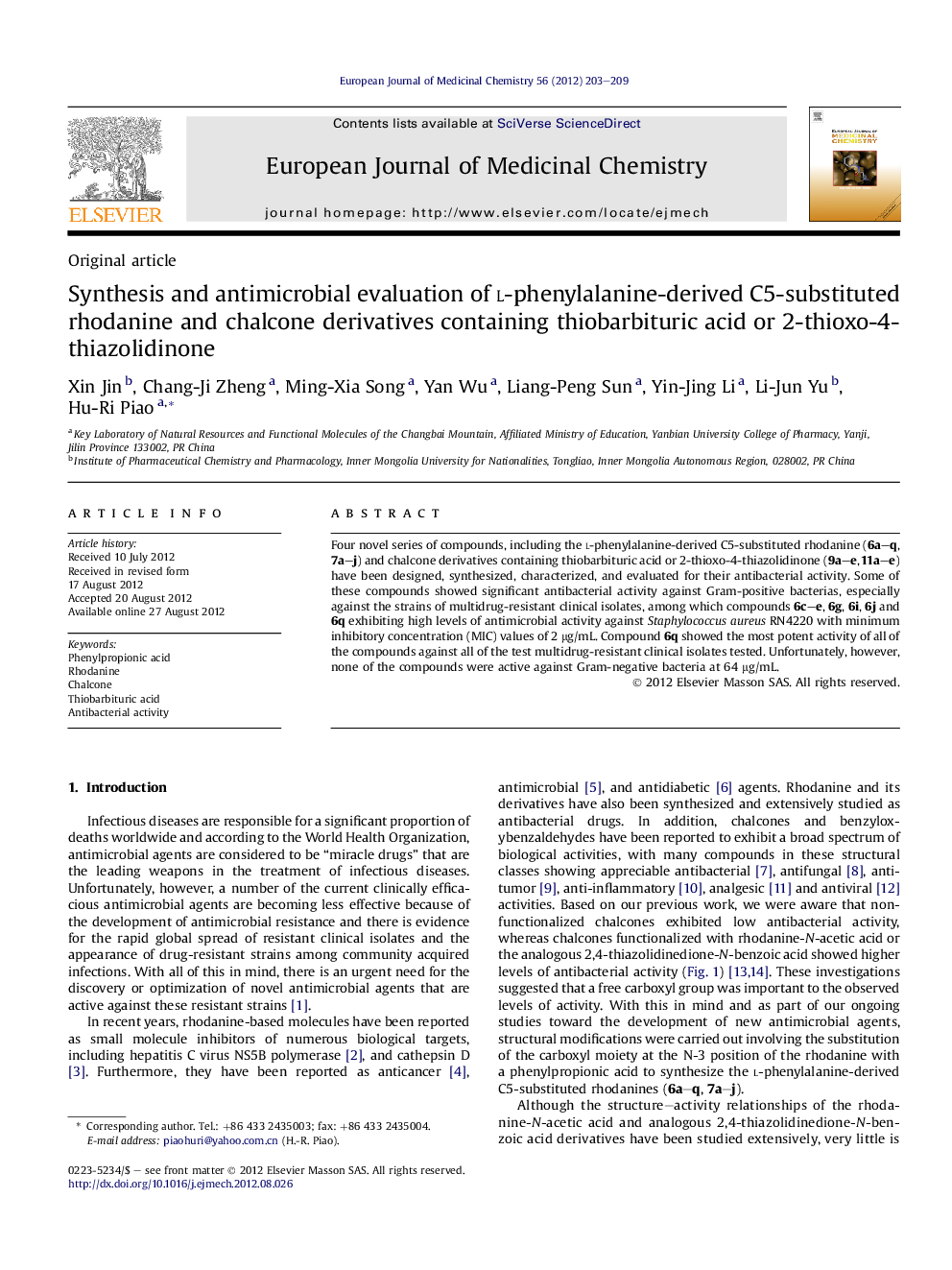| Article ID | Journal | Published Year | Pages | File Type |
|---|---|---|---|---|
| 1397412 | European Journal of Medicinal Chemistry | 2012 | 7 Pages |
Four novel series of compounds, including the l-phenylalanine-derived C5-substituted rhodanine (6a–q, 7a–j) and chalcone derivatives containing thiobarbituric acid or 2-thioxo-4-thiazolidinone (9a–e, 11a–e) have been designed, synthesized, characterized, and evaluated for their antibacterial activity. Some of these compounds showed significant antibacterial activity against Gram-positive bacterias, especially against the strains of multidrug-resistant clinical isolates, among which compounds 6c–e, 6g, 6i, 6j and 6q exhibiting high levels of antimicrobial activity against Staphylococcus aureus RN4220 with minimum inhibitory concentration (MIC) values of 2 μg/mL. Compound 6q showed the most potent activity of all of the compounds against all of the test multidrug-resistant clinical isolates tested. Unfortunately, however, none of the compounds were active against Gram-negative bacteria at 64 μg/mL.
Graphical abstractFour novel series of compounds, including the l-phenylalanine-derived C5-substituted rhodanine (6a–q, 7a–j) and chalcone derivatives containing thiobarbituric acid or 2-thioxo-4-thiazolidinone (9a–e, 11a–e) have been designed, synthesized, characterized, and evaluated for their antibacterial activity. Some of compounds presented strong antibacterial activities.Figure optionsDownload full-size imageDownload as PowerPoint slideHighlights► New compounds of rhodanines and chalcone derivatives were synthesized. ► Some compounds exhibited more potent than control medicines against MRSA and QRSA. ► 6q showed strongest activity against multidrug-resistant isolates (MIC = 2 μg/mL).
